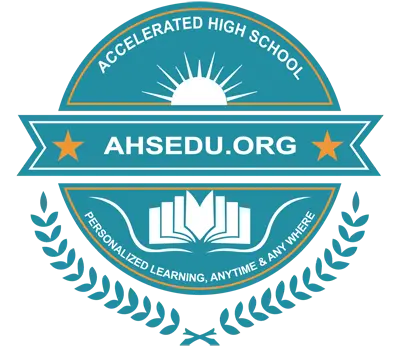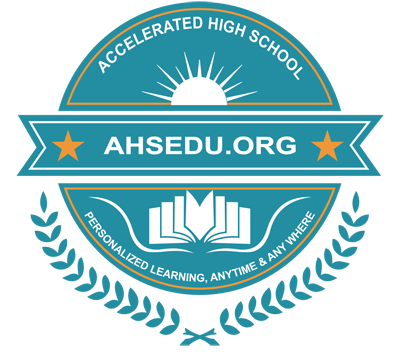Accelerated High School
Standardized Curriculum of General Science-V
Scientific and technological advances have proliferated and now permeate most aspects of life in the 21st century. It is increasingly important that all members of our society develop an understanding of scientific and engineering concepts and processes. Learning how to construct scientific explanations and how to design evidence-based solutions provides students with tools to think critically about personal and societal issues and needs. Students can then contribute meaningfully to decision-making processes, such as discussions about climate change, new approaches to health care, and innovative solutions to local and global problems.
Mission:
All students will understand the scientific concepts and processes required for personal decision-making, participation in civic life, and preparation for careers in STEM fields (for those who choose).
Vision:
Prepare students to become scientifically literate individuals who can effectively:
- Apply scientific thinking, skills, and understanding to real-world phenomena and problems;
- Engage in systems thinking and modeling to explain phenomena and give a context for the ideas to be learned.
- Conduct investigations, solve problems, and engage in discussions;
- Discuss open-ended questions that focus on the strength of the evidence used to generate claims.
- Read and evaluate multiple sources, including science-related magazine and journal articles and web-based resources,, to gain knowledge about current and past science problems and solutions and develop well-reasoned claims.
- Communicate ideas through journal articles, reports, posters, and media presentations that explain and argue.
Spirit and Intent:
The AHS science curriculum has been prepared and standardized following The New Jersey Student Learning Standards for Science (NJSLS-S), which describe the expectations for what students should know and be able to do as well as promote three-dimensional science instruction across the three science domains (i.e., physical sciences, life sciences, and earth and space sciences). From the earliest grades, the expectation is that students will engage in learning experiences that enable them to investigate phenomena, design solutions to problems, make sense of evidence to construct arguments, and critique and discuss those arguments (in appropriate ways relative to their grade level).
The foundation of the NJSLS-S reflects three dimensions: science and engineering practices, disciplinary core ideas, and cross-cutting concepts. The performance expectations are derived from the interplay of these three dimensions. These three components must be integrated into all learning experiences. The three dimensions within each standard document are intentionally presented as integrated components to foster sense-making and design solutions to problems. Because the NJSLS-S is built on the notions of coherence and contextuality, each of the science and engineering practices and cross-cutting concepts appears multiple times across topics and at every grade level. Additionally, the three dimensions should be an integral part of every curriculum unit and should not be taught in isolation.
Three Dimensions of AHS Science Curriculum:
The performance expectations reflect the three dimensions and describe what students should know and be able to do. In layman’s terms, they are “the standards.” They are written as statements that can be used to guide assessment and allow for flexibility in the way that students can demonstrate proficiency. The example below is provided to illustrate the interconnected nature of the NJSLS-S components.
Becoming familiar with science practices and cross-cutting concepts is a critically important first step in designing learning experiences reflective of the three dimensions. A description of each of the science and engineering practices and the cross-cutting concepts can be found in the next sections. Further, for students to develop proficiency in the NJSLS-S, they will need to engage in learning experiences that are meaningful, cumulative, and progressive. Learning experiences are designed to be meaningful, go beyond reading about science concepts, and provide opportunities for students to be active learners and make sense of ideas. Cumulative learning experiences provide opportunities for students to use and build on ideas that they have learned in previous units. Progressive learning experiences provide multiple occasions for students to engage in ways that enable them to improve their construction of explanations and solutions over time by iteratively assessing them, elaborating on them, and holding them up to critique and evidence.
Curriculum for Grade-V General Science:
Standard 1: Energy.
Learning Objectives:
- Use evidence to construct an explanation relating the speed of an object to the energy of that object.
- Make observations to provide evidence that energy can be transferred from place to place by sound, light, heat, and electric currents.
- Ask questions and predict outcomes about the energy changes that occur when objects collide.
- Apply scientific ideas to design, test, and refine a device that converts energy from one form to another.
Topics of AHS-GS:
Heat and Thermal Energy
- Change-of-state diagrams: melting, freezing, vaporizing, and condensing
- Change-of-state diagrams: melting, freezing, vaporizing, condensing, and sublimating
- Heating, cooling, and changes of state
- Predict heat flow
- Predict temperature changes
- How are temperature and mass related to thermal energy?
Physical and Chemical Change
- Compare physical and Chemical Changes
- Identify reactants and products
- Identify mixtures
Energy: Forms and Transformation
- Different forms of energy: mechanical, thermal, electrical, and more.
- Energy transformations and the conservation of energy.
- Renewable and non-renewable energy sources.
Standard 2: Waves and their Applications in Technologies for Information Transfer
Learning Objectives:
- Develop a model of waves to describe patterns in terms of amplitude and wavelength and that waves can cause objects to move.
- Develop a model to describe that light reflecting from objects and entering the eye allows objects to be seen.
- Generate and compare multiple solutions that use patterns to transfer information.
Topics of AHS-GS:
Sound and Light Waves
- Introduction to waves
- Properties of sound waves: frequency, amplitude.
- Properties of light waves: reflection, refraction.
- How sound and light travel.
Standard 3: From Molecules to Organisms: Structures and Processes
Learning Objectives:
- Construct an argument that plants and animals have internal and external structures that function to support survival, growth, behavior, and reproduction.
- Use a model to describe that animals receive different types of information through their senses, process the information in their brain, and respond to the information in different ways.
Topics of AHS-GS:
Cells
- Cells
- Tissues
- Identify functions of plant cell parts
- Identify functions of animal cell parts
- Plant cell diagrams: identify parts
- Animal cell diagrams: identify parts
- Plant cell diagrams: label parts
- Animal cell diagrams: label parts
- Compare cells and cell parts
Classification of Living Things
- Five kingdom Systems
- Classification and Characteristics of Plants
- Classification and Characteristics of Animals
- Identify mammals, birds, fish, reptiles, and amphibians
- Identify vertebrates and Invertebrates
- Use evidence to classify mammals, birds, fish, reptiles, and amphibians
- Use evidence to classify animals
- Describe, classify, and compare kingdoms
Scientific Names
- Identify common and scientific names
- Origins of scientific names
- Use scientific names to classify organisms
Plants
- Identify different parts of plants
- Classify fruits and vegetables as plant parts
- How do plants make food?
- Identify flower parts and their functions
- Flowering plant and conifer life cycles
- Moss and fern life cycles
- Identify the photosynthetic organism
Animals
- Read and construct animal life cycle diagrams
- Compare animal life cycles
- Human organs and their functions
- Body systems: circulation and respiration
- Body systems: digestion
- Body systems: removing waste
- Body systems: perception and motion
Adaptations
- Microorganisms
- Role of microorganisms as decomposers
- Advantages and Disadvantages of microorganisms
- Preventing the infections
Standard 4: Earth’s Place in the Universe
Learning Objectives:
- Identify evidence from patterns in rock formations and fossils in rock layers to support an explanation for changes in a landscape over time.
Topics of AHS-GS:
Conservation and Natural Resources
- Science literacy: how can a community protect sea turtles?
- Evaluate natural energy sources
Rocks and Minerals
- Changes to Earth's surface: erosion
- Identify minerals using properties
- Identify rocks using properties
- How do sedimentary rocks form?
- Classify rocks as igneous, sedimentary, or metamorphic
- How do rock layers form?
Fossils
- Introduction to fossils
- Identify and classify fossils
- Compare fossils to modern organisms
- Compare ancient and modern organisms: use observations to support a hypothesis
- Interpret evidence from fossils in rock layers
Weather and Climate
- Read a thermometer
- Compare temperatures on thermometers
- Collect and graph temperature data
- What's the difference between weather and climate?
- Weather and climate around the world
- Weather or climate? Cite text
- Use climate data to make predictions
- Use data to describe climates
- Label parts of water cycle diagrams
Standard 5: Earth’s Systems
Learning Objectives:
- Make observations and/or measurements to provide evidence of the effects of weathering or the rate of erosion by water, ice, wind, or vegetation.
- Analyze and interpret data from maps to describe patterns of Earth’s features.
Topics of AHS-GS:
Earth’s Features
- Identify Earth's land features using photographs
- Identify Earth's land features using satellite images
- Describe and graph water on Earth
- Read a topographic map
- Select parts of a topographic map
Standard 6: Astronomy
Topics of AHS-GS
Astronomy
- Planets in our solar system.
- Earth's position in the solar system.
- Phases of the moon.
- Day and night
- Introduction to other celestial bodies: stars, galaxies.
- Shadows
- Earth’s rotation and orbit
- The brightness of the Sun and other stars
- Constellations and the changing night sky
- Identify constellations
Standard 7: Engineering Design
Learning Objectives:
- Define a simple design problem reflecting a need or a want that includes specified criteria for success and constraints on materials, time, or cost.
- Generate and compare multiple possible solutions to a problem based on how well each is likely to meet the criteria and constraints of the problem.
- Plan and carry out fair tests in which variables are controlled and failure points are considered to identify aspects of a model or prototype that can be improved.
Topics of AHS-GS:
Engineering Practices
- Evaluate multiple design solutions to prevent flooding
- Identify the best design solution to prevent hurricane damage
Units and Measurement
- Choose customary units of distance
- Choose metric units of distance
- Choose customary units of mass
- Choose metric units of mass
- Choose customary units of volume
- Choose metric units of volume
- Abbreviate time and length units
- Abbreviate mass and volume units







